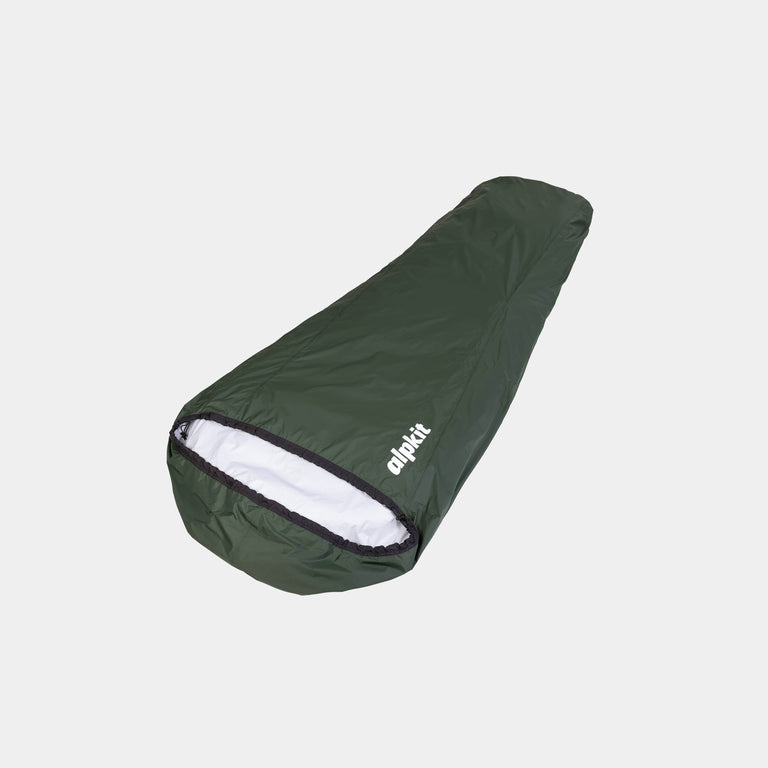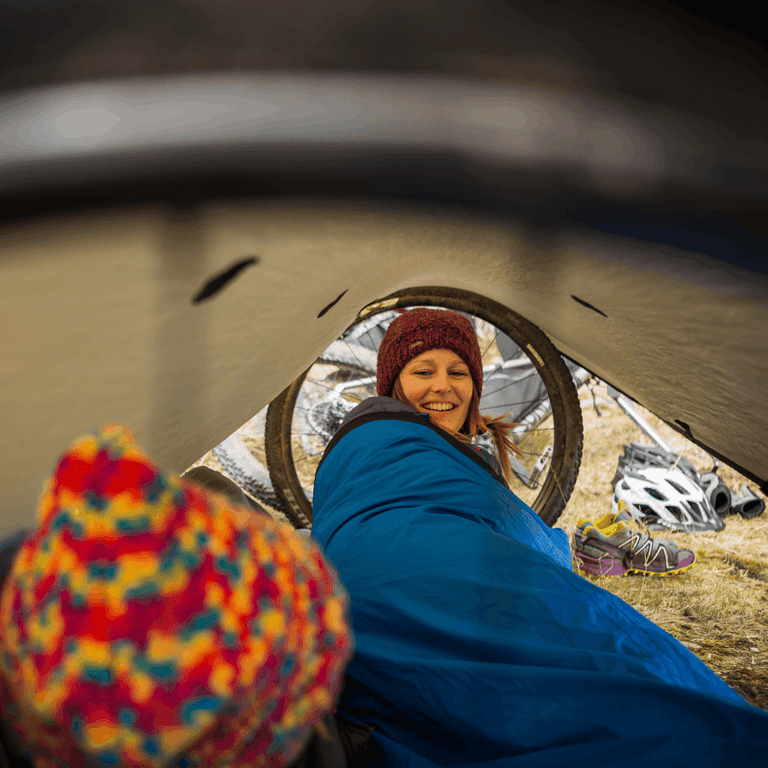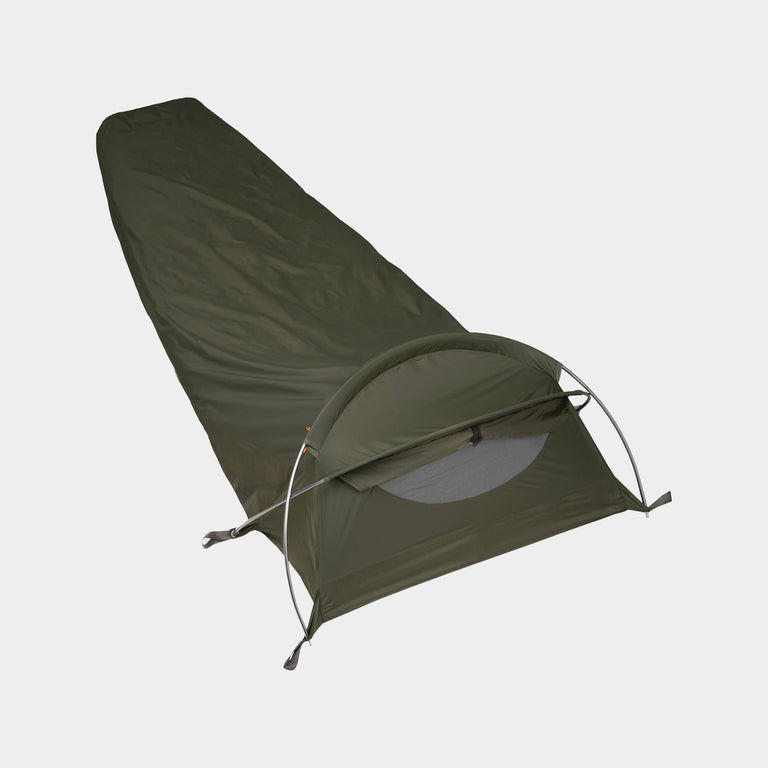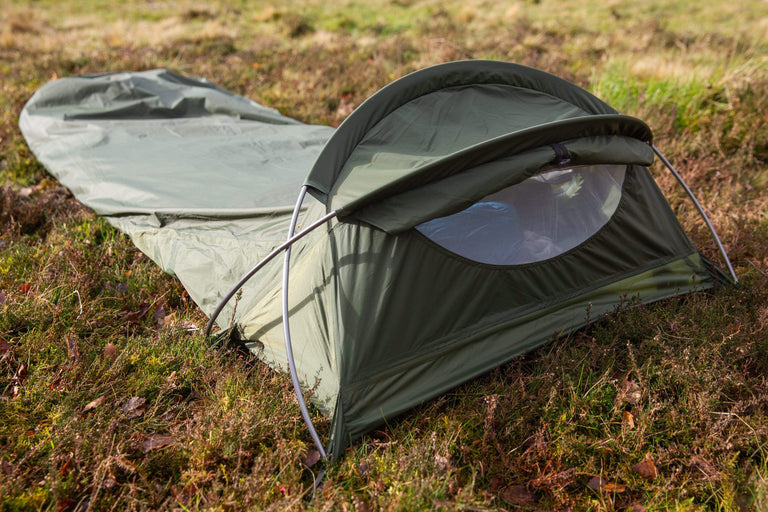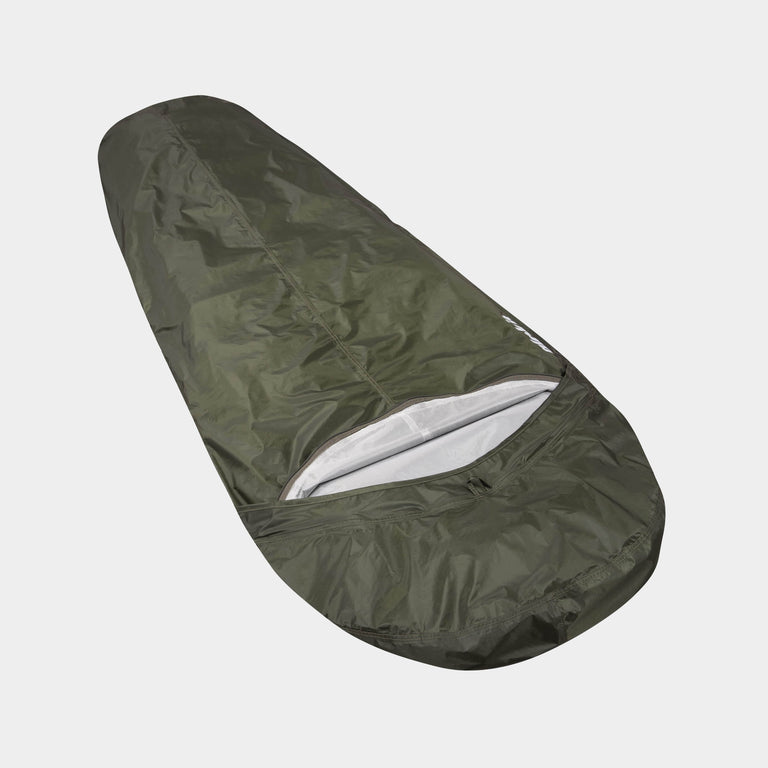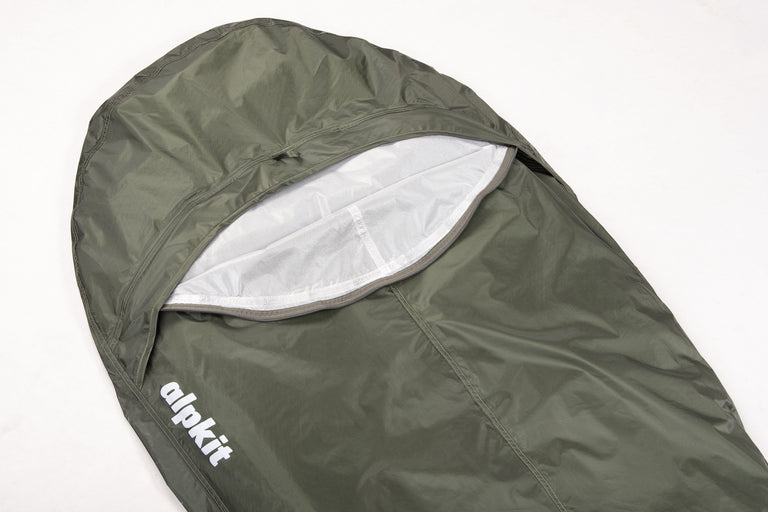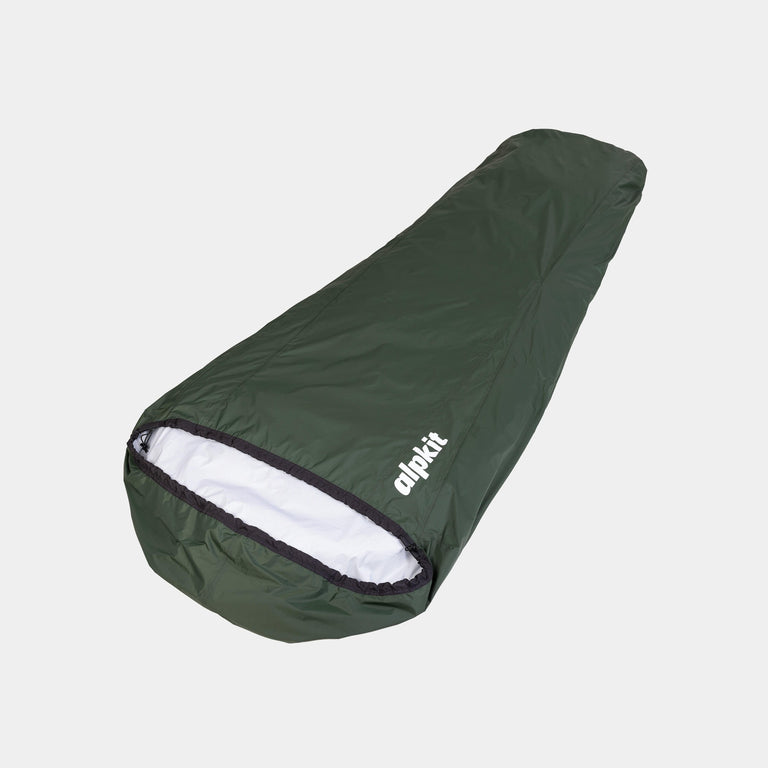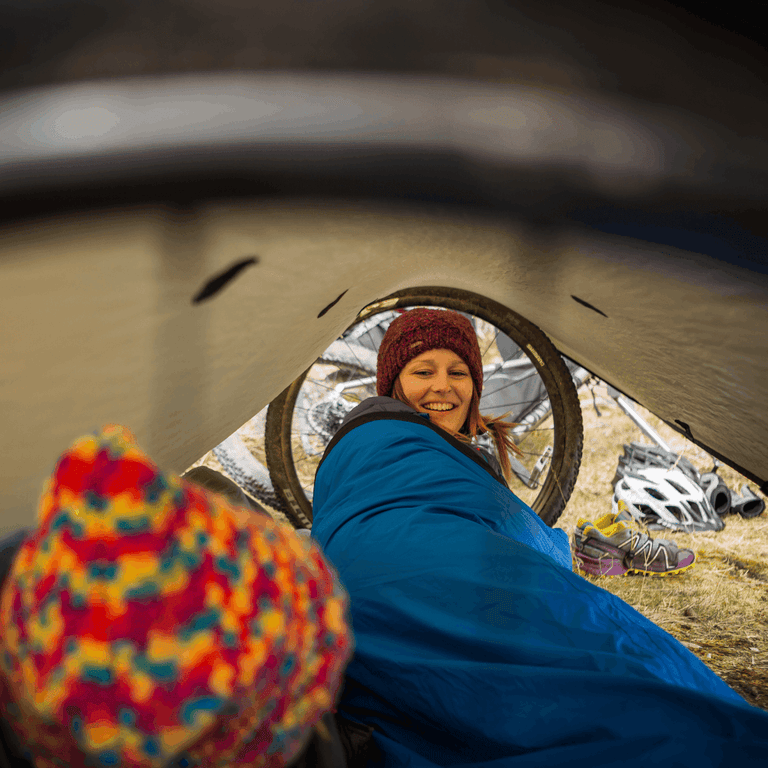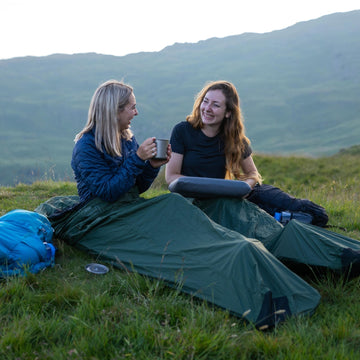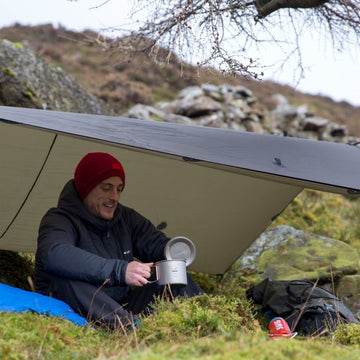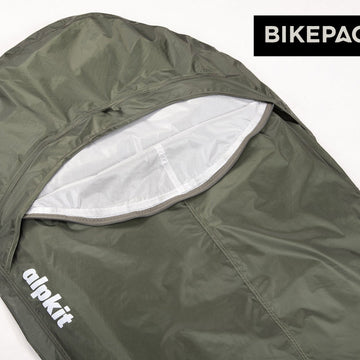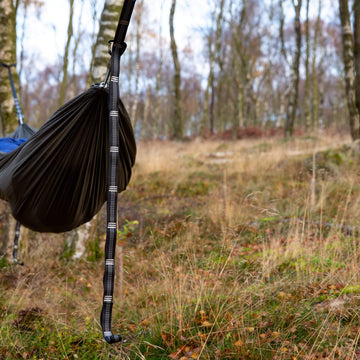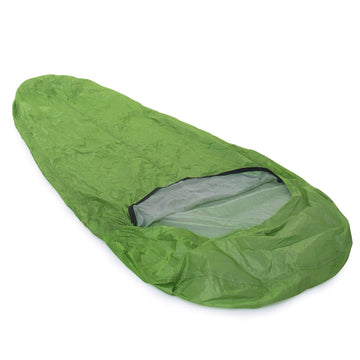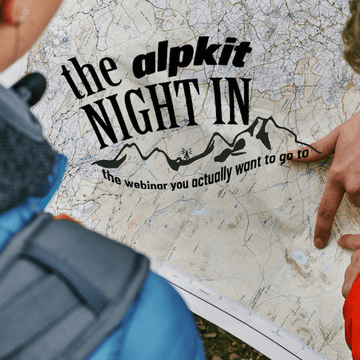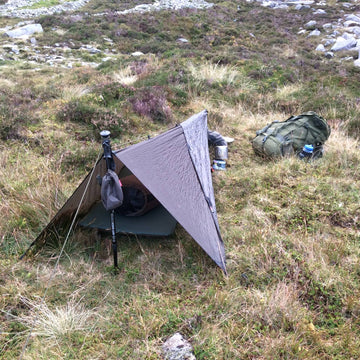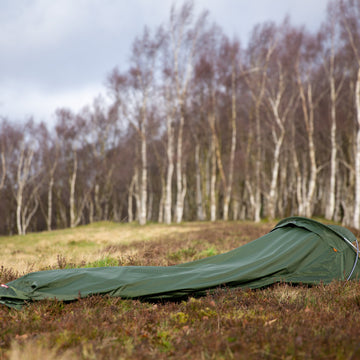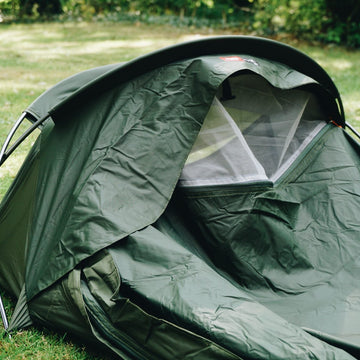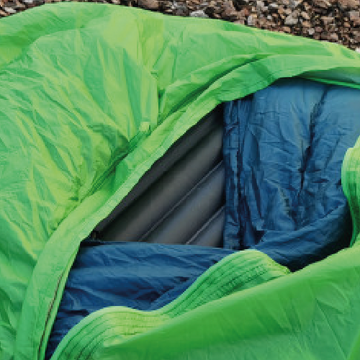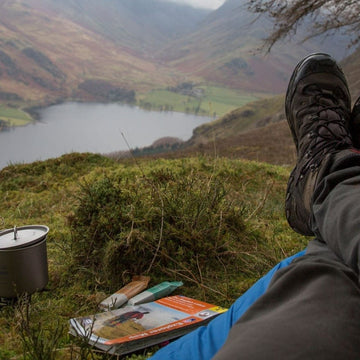
Bivvying isn't just camping - it's creativity. Find joy in nature's canvas, where each pitch becomes a playground for exploration and a testament to adventure.
Bivvying, or "bivouacking" is camping using very minimal and lightweight equipment. The simplicity of a bivvy changes your relationship with the outdoors.
Camping, for some, comes with too much faff, too much certainty and too much of a barrier between them and nature. The luxury of the tent encourages you to carry too many little luxuries and limits where you can doss down.
Every bivvy is an opportunity to leave the weight of our tent behind and approach our trips through a different lens.
Bivvying is for problem solvers
Bivvying forces some difficult decisions upon you.
The beauty of the bivvy is that it rewards simplicity and creativity. Choosing kit that serves a dual purpose means you carry less. Sure you might have to think a bit more creatively about how to use it but for a creative problem solver that like waving a red flag at a bull.
We have a range of lightweight bivvy equipment designed specifically for this minimalist outdoor experience. Here's a pick of the best bivvy gear. Use creatively and design your adventure on your own terms:
-
Bivvy bag: Our lightweight, compact waterproof bivvy bags are a must. They provide essential protection from the elements while being breathable to manage condensation.
-
Sleeping bag: A lightweight, yet warm, down or synthetic sleeping bag is best. Ensure it's rated to at least 3-seasons for the temperatures you are likely to encounter in spring.
-
Sleeping mat: A lightweight, inflatable sleeping mat will insulate you from the ground and improve sleep comfort without adding much weight. You will not need this if you are hammocking. Which leads us nicely on to.
-
Hammock: Hammocks are a lightweight and practical solution to an overnight bivvy. Unlike your common garden hammock, our bivvy hammocks are designed to be comfortable and pack down small. Cold spots can occur as you compress your sleeping bag, so an insulated undersheets will keep you warm in the spring.
-
Lightweight tarp: An additional level of protection which works with both a ground based bivvy and a hammock. A whole subculture has sprung up under the guise of Tarpology. Much like origami it pushes the boundaries of how you can configure and fold a single sheet. A group tarp works out to be very efficient when you work out the weight per person compared to a tent.
-
Backpack: As minimal and lightweight as you kit may be, your are not going to fit it in your pockets - although we challenge you to fit a weekend bivvy kit into a bum bag. Avoid carrying heavy, bulky equipment and choose an ultra-lightweight backpack, which is designed to carry your essentials without adding unnecessary weight.
-
Cooking system: Compact cooking systems, like lightweight gas stoves and small titanium pots, are ideal for preparing hot one-pot meals and drinks.
-
Water purification: Tummies don't like surprises. A lightweight water filter or purification tablets are essential for ensuring a safe water supply.
-
Clothing: Layer your clothing for maximum versatility. Start with a moisture-wicking, quick-drying baselayer against your skin. Choose trousers and shirts which are lightweight and quickdrying, but don't overlook the benefits of good fit and built in stretch to help you wriggle in and out of your little cocoon. A waterproof jacket is a must for the unpredictable spring weather and a lightweight down or synthetic jacket will take off the evening chill.
-
Headtorch: Nothing new here, a compact and lightweight headlamp is standard issue for navigation and camp routines after dark.
This selection not only provides the basics for a safe and enjoyable bivvy experience but also ensures that the load remains light, making your springtime adventure both manageable and memorable.
Up for a lightweight bivvy adventure
You are already sold on the idea of a bivvy so why doesn't everyone share your enthusiasm? Let's put it all out there and look at the alternative perspective.
- Weather concerns: Spring weather can be unpredictable, with sudden changes in temperature, rain, or even late snowfalls in some areas. This unpredictability can deter people who are not prepared or experienced in handling such conditions.
- Lack of comfort: Bivvies are minimalist shelters, typically less comfortable than tents. They offer limited space and protection from the elements, which can be a significant deterrent for those used to more comfortable camping setups.
- Bugs: Springtime is often a period of increased wildlife activity. While lambs are undoubtably cute, insects divide opinion. The lack of a fully enclosed shelter in a bivvy can make some people uneasy about potential encounters of the arthropodic kind.
- Getting caught: In some areas, bivvying might be restricted due to land use regulations, conservation efforts, or private property laws. This is no different to any wild camping. We always need to be aware of and respect these restrictions. However, a bivvy feels more exposed and sleeping in the open without the full protection of a tent can be intimidating for beginners or less experienced outdoor enthusiasts.
5 steps to finding a bivvy buddy
Now, there is nothing wrong with a solo bivvy, nothing at all. In fact it is one of its main use cases. If however you are not a member of the Secret Bivvy Circle, and you don't want to keep all the fun to yourself but they are, let's say; resisting, here are some strategies to help you turn the screw.
-
Describe the adventure: Emphasise the new and exciting challenge that bivvying presents. Frame it as an adventurous step up from traditional camping, appealing to their sense of adventure and desire for brand new experiences. This can work well at the start of the year when people are making resolutions and goal setting.
-
Personal recommendations: Give the old heart strings a tug and use stories from others who have transitioned from camping to bivvying. Seeing others who have made this switch can be super persuasive. We have several ambassadors who have extensively written, or produced videos about bivvying, such as Al Humfreys.
-
One-time only events: Folk don't like to miss out. Create a sense of urgency or exclusivity. For instance, suggest going stargazing during a meteor shower or in a unique location. This time-bound opportunity with events they are familiar with can create a 'now or never' feeling. The sun is at the peak of its 11 year cycle in 2024, so it's the best opportunity in some time to experience some solar fireworks.
-
It's camping, lightweight style: Don't even mention the B-word. Just go camping and highlight how the skills and equipment from camping can be easily adapted to bivvying. By reducing the perceived barriers or difficulty you can influence .
-
Baby steps: Don't freak them out with a trip to hell and back. Plan a short, one-night bivvy trip close to home as a start. Smaller commitments are less daunting and can lead to more significant engagement over time. Al Humfreys has been a master of this, converting thousands of people to find adventure close to home.
Stay stealthy, leave no trace and enjoy the companionship of a bivvy shared.
